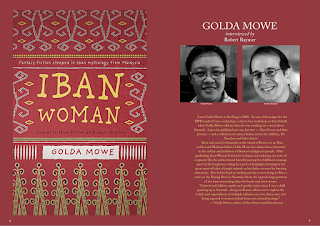Two years ago, in March of 2022, after finally completing a sixth novel (set in Pompeii about an unusual friendship between an American backpacker and a British expatriate widow residing in Malaysia), I got the idea to rewrite a couple of my other novels (to give them a fighting chance in a tight US/UK market). While I was at it, I did all five novels, plus two collections of short stories (including Lovers and Strangers Revisited that I blogged about), and a play, a comedy based on the short story “Neighbors”.
I knew that a quick read wasn’t going to do them justice, so I decided to give each novel what I came to call the 9X treatment. First, after printing them out, I would line edit each manuscript 3X (three times)—in black, in blue, and in red. Then on the computer, I would go through each chapter 3X—making additional corrections and tightening the writing by cutting and rearranging sentences, paragraphs. (Never assume your writing is good; assume you can make it better!)
Then for the final 3X, I would go through each manuscript beginning to end. The first pass is straight forward and gives me a good feel for pacing, structure, chronological order, internal logic—is it working or not? For the second pass I would start with the last chapter, then the next to last chapter, working my way to the first chapter. Editing chapters out of sequence is powerful. It makes you think…wait, did I mention this detail earlier; then double check those early chapters and make the necessary changes. A good way of catching those errors of omissions!
If I add new details at this stage, I would immediately go back and reference those details, if necessary, in the earlier chapters (lest I forget later). Of course, I would do the same while editing the manuscripts in various colors, scribbling in my notes and reminders to add in or move around various paragraphs or a shift a scene to a more effective location. Then I would go through the manuscript one more time from beginning to end to complete the 9X process. For the short stories, since each story is complete within itself, I would stop at 6X.
Early during this novel rewriting process, I got a great idea for a seventh novel. Not wanting to be distracted, I began shoveling notes (and eventually notebooks) into a loose folder. By mid-2023, I added my Pompeii novel back into the mix to help cut the length and improve it with fresh eyes, impressed by what I had accomplished thus far with the other novel rewrites.
I also created a progress chart for all eight manuscripts since their progress overlapped, and would then check off each completed step in the 9X process. No skipping steps along the way just because no one is looking!
True, it was a lot of work. It's also a nice feeling knowing that I followed through the entire process, thus keeping my commitment to myself. When I started, I didn’t think it would take two years! Nor had I planned to do all five novels, let alone redo that sixth novel, plus both collection of stories and that play that had been sitting idle for nearly a decade. I kept thinking, while I’m at it…
And while I’m at it, I’ve started a new progress chart for 2024 and the remainder of this decade (and the next—I’m being ambitious!) for future novels, beginning with that seventh novel, having accumulated over 400 pages of notes these last two years. Plus, I have several previous novels on hold for one reason or another, some with complete rough drafts; others, a third of the way through the first draft; or with hundreds of pages of notes already in the computer, including sequels to the other six novels.
Itching to get started, I’ve already begun writing that novel number seven. In the meantime, I’m hoping one of these six rewritten novels will open the door for the others, making all the hard work pay off. Or maybe it will be this seventh novel… You have to trust the novel writing (and rewriting) process.
—Borneo Expat Writer
My interviews with other Malaysian writers:
Chuah Guat Eng, author of Echoes of Silence and Days of Change.












































